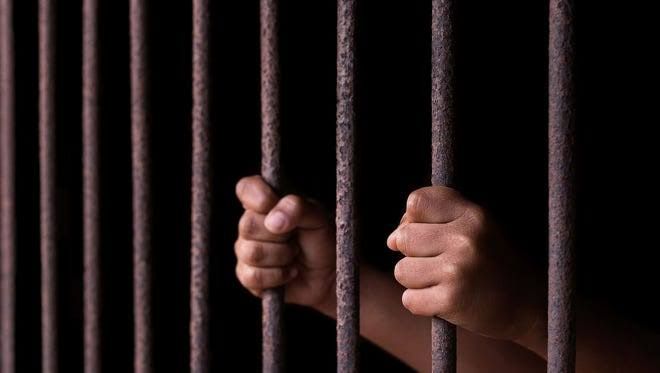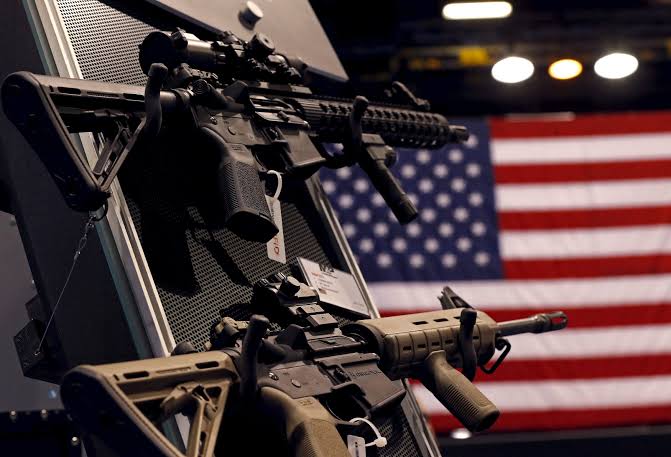Author -Prity M.Bhagat, a student of KES. Shri Jayantilal H. Patel Law College
Introduction
The juvenile justice system is designed to address the unique needs and circumstances of young offenders, with a focus on rehabilitation and reintegration into society, rather than punishment. The legal system and procedures for dealing with young individuals (typically under 18) who are alleged to have committed crimes are known as juvenile justice. The juvenile justice system in India is governed by the Juvenile Justice (Care and Protection of Children) Act, 2015. This legislation outlines the legal framework for dealing with children in conflict with the law (those who have committed offenses) and children in need of care and protection. The Indian juvenile justice system is a legal framework created to protect children’s rights and well-being while providing them with appropriate care and protection. Its basis is not punitive measures, but rather renewal and transformation. A number of laws and regulations that are designed to ensure the welfare and growth of juvenile offenders govern this system. The Indian Juvenile Justice System has evolved significantly over time, reflecting a growing knowledge of the diverse requirements of juvenile offenders.
A decisive step was taken in 1920 when the first Juvenile Court was established in Bombay (now Mumbai) under the Children’s Act, 1920. This meant recognizing that children under the age of 16 needed special protection and care, which culminated in the creation of a separate legal framework to deal with juvenile delinquency. A watershed moment came in 1986, when the Juvenile Justice Act replaced the Juvenile Act of 1920. This ground-breaking legislation recognized that young people in conflict with the law were not traditional criminals but people in need of care and attention. A new program called the Juvenile Welfare Board was created to oversee the court process, and an observatory was created to house minors awaiting legal action. Another important amendment was made in 2000, to adjust the Children’s Law to the principles of the United Nations on the Rights of the Child. This amendment raised the age of young offenders from 16 to 18 and increased the rehabilitation and ease of reintegration of young offenders into society.
In 2015, there was another major update after a high-profile case involving a young killer who brutally raped and killed a young woman in Delhi in 2012 (also known as the Nirbhaya incident). The amendment introduced a simplified procedure that allows 16- to 18-year-olds to be tried as adults for crimes such as rape and murder. However, significant rehabilitation programs and admissions were maintained for all other crimes. The 2021 amendments reflect India’s commitment to strengthening its juvenile justice system. The amendment included provisions for the fostering and adoption of children with extreme care and protection needs. We have also strengthened measures for the rehabilitation and social integration of young offenders. We have also strengthened the role of the Juvenile Justice Committee and the Juvenile Welfare Committee in the decision-making process.
Juvenile Justice (Care and Protection of Children) Act, 2015.
In India, juvenile justice is governed by the Juvenile Justice (Care and Protection of Children) Act, 2015. Here are the key aspects of this law:
Age Definition: A child below 18 years of age. Juvenile Justice Board (JJB) deals with matters concerning juveniles in conflict with the law. It’s Composition is Judicial Magistrate and two social workers, one of whom must be a woman.
There’s a Child Welfare Committee (CWC) with a purpose to handle cases of children in need of care and protection. Its composition is of a Chairperson and four other members with experience in child welfare, psychology, or sociology.
Juveniles aged 16 to 18 accused of heinous crimes may be tried as adults, based on the assessment of the JJB regarding the child’s mental and physical capacity, and the circumstances of the offense. In case of other crimes they are generally tried by the JJB, which focuses on rehabilitation rather than punishment.
Rehabilitation and Social Reintegration
- Observation Homes: Temporary shelters for juveniles awaiting inquiry or trial.
- Special Homes: Long-term rehabilitation centers for juveniles found guilty.
- Foster Care and Adoption: For children in need of care and protection.
Rights of Juveniles
- Legal Aid: Juveniles are entitled to free legal aid.
- Privacy: Protection of the juvenile’s identity during proceedings.
- Rehabilitation: Focus on the child’s rehabilitation and reintegration into society.
This designed to balance the need for accountability with the recognition that children have a greater capacity for change and rehabilitation. The aim is to reintegrate juveniles into society as responsible and productive citizens.
Leniency
The perception that the juvenile justice system in India is more lenient towards elite or privileged individuals stems from broader societal issues related to inequality and the influence of socioeconomic status on legal outcomes.
Access to Legal Resources- Elite individuals often have access to high-quality legal representation, which can result in more favorable outcomes. Wealthy families can afford bail, fines, and private rehabilitation programs, which can influence the judicial process.
Social Influence- Families with social and political connections may exert influence on legal proceedings, potentially swaying outcomes in favor of the juvenile. Cases involving elite juveniles may receive different media coverage, sometimes leading to public sympathy or pressure on the judicial system.
Perception of Rehabilitation- Elite juveniles might be sent to private rehabilitation centers that offer better facilities and programs compared to government-run institutions. Judges might perceive elite juveniles as having more to lose and greater potential for rehabilitation, impacting their sentencing decisions.
Case Handling and Sentencing- Judges have discretion in sentencing, which can sometimes result in leniency for juveniles from privileged backgrounds. Juvenile Justice Board (JJB) focus on rehabilitation over punishment may appear to be more lenient, particularly when applied to well-represented juveniles.
Examples and Public Perception- Instances where elite juveniles receive perceived lenient treatment can shape public opinion about the fairness of the juvenile justice system. Disparities in the treatment of juveniles from different socioeconomic backgrounds can reinforce the belief that the system is biased.
While the juvenile justice system in India aims to be fair and rehabilitative, the influence of socioeconomic status can lead to perceptions and instances of leniency towards elite juveniles. Addressing these disparities requires systemic changes to ensure equal treatment for all juveniles under the law.
The principle of equality before the law is fundamental to a fair and just legal system. Regardless of socioeconomic status, all individuals should be treated equally under the law. Ensuring equality before the law is essential for upholding the principles of justice, fairness, and democracy. By treating the poor and the rich alike, the legal system promotes social justice, protects individual rights, and fosters trust and cohesion within society. Efforts to promote equality in the legal system should be a priority for policymakers, lawmakers, and advocates for justice reform.
Case study
1.One significant juvenile law case in India that received widespread attention is the “Nirbhaya case” (not a “failed” case per se, but a landmark one). This case involved the brutal gang rape and murder of a 23-year-old physiotherapy intern, Jyoti Singh Pandey, on December 16, 2012, in Delhi.
While most of the perpetrators were adults, one of them, referred to as “Juvenile A,” was found to be a minor at the time of the crime. Juvenile A was just short of 18 years old when the incident occurred. Due to being a minor, he was tried in a juvenile court.
The case sparked outrage across India and internationally, leading to widespread protests and demands for stricter laws regarding juvenile offenders. The fact that the juvenile involved in such a heinous crime could potentially receive a lighter sentence due to his age raised significant debates about the adequacy of existing laws.
In response to public outcry, there were calls to amend the Juvenile Justice (Care and Protection of Children) Act to allow harsher punishment for juveniles involved in serious crimes such as rape and murder. Eventually, in 2015, the Juvenile Justice Act was amended to allow for juveniles between the ages of 16 and 18 to be tried as adults for heinous offenses. However, this change came after the Nirbhaya case.
While not a “failed” case in the sense of legal procedure, the Nirbhaya case highlighted flaws in India’s juvenile justice system and spurred legislative changes aimed at addressing concerns about juvenile offenders involved in serious crimes.
2.The “Pune Porsche case” refers to a high-profile incident involving a teenager from an influential family. Here are the key details of the case:
Incident Overview
The incident took place in Pune, Maharashtra. A 17-year-old boy, driving a Porsche, allegedly crashed into multiple vehicles at a traffic signal, causing significant damage and injuring several people. The driver was the son of a wealthy businessman, which added a layer of public interest and scrutiny due to his family’s socio-economic status.
The teenager was charged with multiple offenses, including rash and negligent driving under the Indian Penal Code (IPC) and provisions of the Motor Vehicles Act. As the accused was a minor, the case was handled by the Juvenile Justice Board (JJB). The boy was initially taken into custody but was later granted bail. There were debates and public opinions regarding the leniency of his treatment given his elite background.
The case received extensive media attention, highlighting issues of juvenile justice, road safety, and the influence of socioeconomic status on legal outcomes. There was significant public outcry over the perceived leniency towards the teenager, with many feeling that his privileged background afforded him preferential treatment. The incident sparked discussions about the adequacy of existing juvenile laws, especially in cases involving severe consequences such as accidents caused by negligent driving.
The case brought attention to the Juvenile Justice (Care and Protection of Children) Act, 2015, which allows for juveniles aged 16 to 18 to be tried as adults in cases of heinous crimes. However, as this incident involved a minor charged with rash and negligent driving (not categorized as a heinous crime), the boy was treated under the juvenile system.
The case underscored the ongoing debate about whether the focus on rehabilitation over punishment in the juvenile justice system adequately serves justice, particularly in high-profile cases involving severe accidents. It highlighted concerns about how wealth and influence can impact legal proceedings and outcomes, leading to calls for more equitable application of the law.
Conclusion
Advocating for stricter juvenile law can be a complex and multifaceted issue.
Stricter laws could serve as a deterrent, discouraging juveniles from engaging in criminal activities by increasing the consequences of their actions. Ensuring that juveniles are held accountable for their actions can instill a sense of responsibility and the understanding that criminal behavior has repercussions. Stricter laws may enhance public safety by removing dangerous juveniles from the community and preventing further criminal acts. Stricter juvenile laws can ensure that victims of juvenile crime receive justice, which is important for the healing process and maintaining public trust in the legal system. A stricter approach doesn’t necessarily exclude rehabilitation. It can include mandatory programs for education, counseling, and skills training, aiming to reform and reintegrate juveniles into society.
Ensuring that everyone, regardless of their financial status, has access to competent legal representation is essential. Judicial systems must actively work to eliminate biases that may favor wealthier individuals. Bail systems should be reformed to prevent wealth-based discrimination. Alternatives to cash bail, such as risk assessment tools and pretrial services, can help ensure that decisions are based on an individual’s flight risk and danger to the community, not their ability to pay. Promoting equality before the law requires continuous efforts and systemic changes to address the various factors that can lead to unequal treatment based on economic status.
Reference



